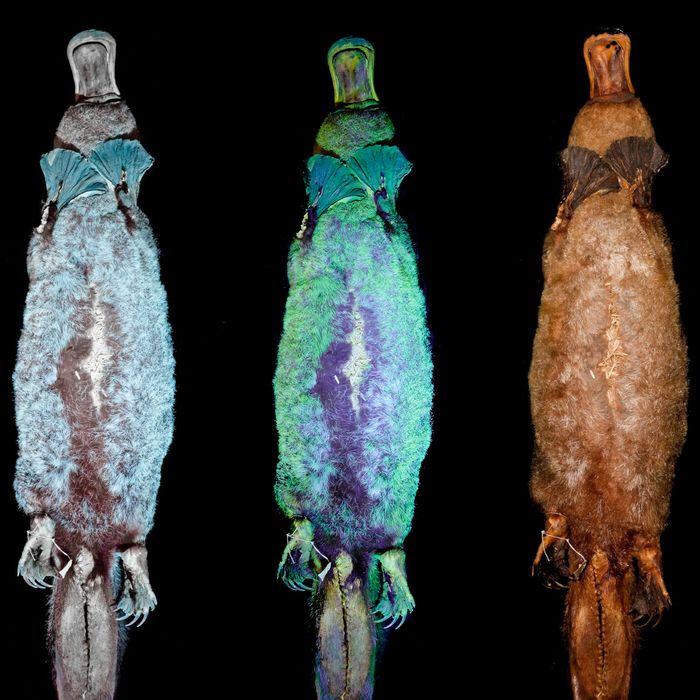
Do you think platypuses glow under black light? Maybe that question has never once crossed your mind, and that’s fair, I suppose. It kind of sounds like a question a college freshman might ask you as you sit smoking a loosely packed joint in the warm glow of their dorm-room lava lamp. But, in fact, it’s the question a team of professional scientists has spent several years researching, and to which we now have a definitive answer.
According to a paper published last month in the journal Mammalia, platypuses do in fact glow under black light. So there’s that! Why do they glow? Well, we don’t know.
The bigger question, perhaps, is: Why did scientists decide to look into it in the first place? According to the New York Times, it all started when Jonathan Martin, an associate professor of forestry at Northland College in Wisconsin, was exploring the woods behind his house with a UV flashlight and noticed that a flying squirrel nibbling at his bird feeder was glowing pink. He and some of his colleagues went to the Field Museum in Chicago to confirm his finding and concluded that, indeed, all three North American flying-squirrel species glow pink under UV light.
While they were there, looking into the cute, glowing squirrels, Erik Olson, an associate professor of natural resources at Northland, began wondering how many other animals might glow under black light.
“Like, what about platypuses?” Olson told the Times. “That’s kind of as far from flying squirrels as you can get.”
Sure. Yeah. You’re at the Field Museum anyway. Why not check out if platypuses glow while you’re there? So like an extremely niche Room Raiders episode, the researchers went down to the “platypus cabinet” in the Field Museum’s basement with their black lights and found that — “sure enough,” according to Olson — the platypuses glowed fluorescent under the UV lights. (The study did not say whether, at any point, the researchers held the UV lights over someone’s pants when they came back from the bathroom and said, “Ew! What’s that?!,” and embarrassed the person.)
Again, no one’s sure why platypuses glow like this. And while they’re not the only animals that do — scorpions, lichens, and puffin beaks all glow under UV light as well, the Times noted — they are among the only mammals that do.
This makes as much sense as anything about platypuses does, I guess, and it’s certainly a much more charming trait than their weird milk sweat. And if you’re wondering whether the scientists continued to just wander around the Field Museum holding UV lights over other animal specimens, the answer appears to be yes, but we’ll have to wait and see what the results of those findings were. “Stay tuned,” Olson told the Times.
"light" - Google News
November 14, 2020 at 02:30AM
https://ift.tt/35vYdvD
Scientists Are Just Sticking Platypuses Under Black Light - The Cut
"light" - Google News
https://ift.tt/2Wm8QLw
https://ift.tt/2Stbv5k
Bagikan Berita Ini















0 Response to "Scientists Are Just Sticking Platypuses Under Black Light - The Cut"
Post a Comment